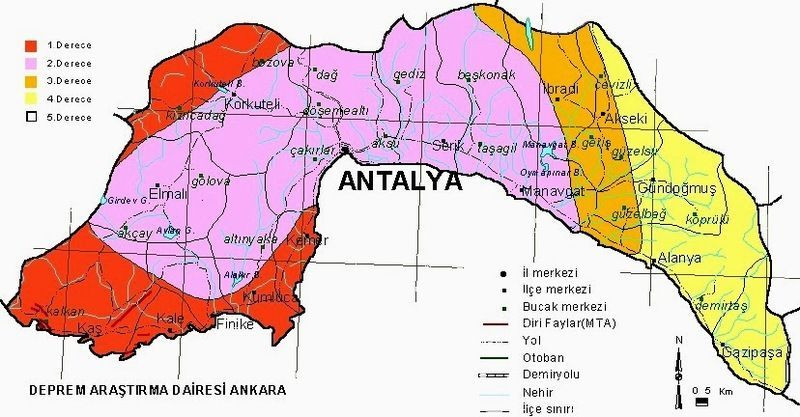Is there a fault line in Alanya? Analysis of Antalya's districts

After the earthquake storm that has been continuing for days in the Aegean region, fearful times persist in Turkey. So, is there a fault line in Alanya that could cause a destructive earthquake? Detailed analyses have been conducted for the districts of Antalya.
Following the earthquake storm in the Aegean, citizens in Turkey are living with the fear of a major earthquake, and experts have completed the analysis of fault lines in Antalya and its districts. Is there a fault line in Alanya that could cause destruction? Here's the answer...
The fault lines most relevant to Antalya include the Kale-Kekova Fault System and the Kemer-Isparta Fault Zone. These fault lines are critical when considering seismic risks for the region.
KALE-KEKOVA FAULT SYSTEM
This fault line, stretching between the districts of Kaş and Demre, is of significant importance in terms of seismic activity in the area. This region, which poses a risk of earthquakes, requires additional safety measures for construction.
KEMER-ISPARTA FAULT ZONE
This fault zone, which starts in Kemer and stretches to Isparta, is an important factor to consider, especially for those living in the inner parts of Antalya. Seismic movements can occasionally occur in this area.
IS ALANYA LOCATED ON A FAULT LINE?
According to the latest maps from the General Directorate of Mineral Research and Exploration (MTA), neither Alanya nor Antalya are located directly on a fault line.
However, the absence of a fault line in Antalya and Alanya does not mean that they are immune to the effects of a destructive earthquake.
Nearby fault lines, such as the Hellenic-Cyprus Belt System and the Burdur Fault Zone, show that the seismic risk in this region is significant. Therefore, in Antalya, including Alanya, building safety and early warning systems are of vital importance.
PRECAUTIONS AGAINST EARTHQUAKE RISKS
As a country living with the reality of earthquakes, it is vital to take both individual and societal precautions. Experts recommend the following measures for citizens, especially those living in high-risk areas:
Check the seismic resistance of buildings: Consult with building safety experts to assess the earthquake resistance of residences.
Prepare an earthquake kit: Always have an earthquake kit containing essential items that may be needed in case of an earthquake.
Learn what to do during an earthquake: Be educated on the correct actions to take during an earthquake to avoid panic.
Identify safe gathering areas: Pre-identify evacuation points in the area and be familiar with them.


